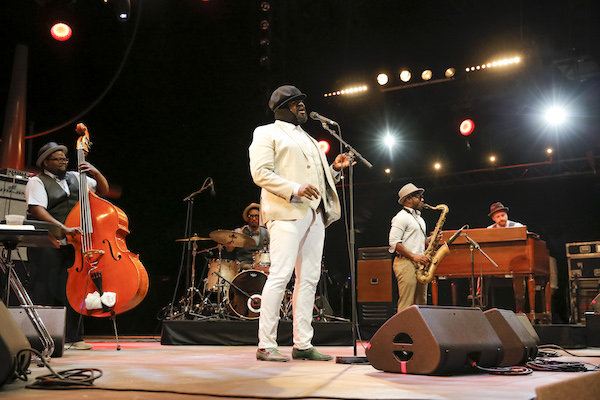ORIGINALLY FEATURED IN THE UPCOMING
A huge and warm welcome awaited Gregory Porter’s modest entrance to the cavernous Royal Albert Hall, which was all but sold out. Throughout the concert this disparity between the devotion of Porter’s audience and his down-to-earth, unassuming character added extra power to his performance. His voice, as rich and vibrant as ever, danced lightly through the melodies with a surprising flexibility. In For All We Know, he slid up and down his range with a riveting ease, hitting blue notes here and bending pitches there.
It was exciting to see that Porter has fully relaxed into his role as a singer of prodigious quality, and perhaps this is the reason behind his humility. He doesn’t see what he does as particularly special, it is just what he loves. When addressing the audience after the opening cover of Nat King Cole’s Mona Lisa, he said he was going to sing his tunes and feel good. Porter then added that he hoped everyone else would feel good too, showing that has plenty of leftover love to share with the audience. This was expressed even more abundantly in numbers such as But Beautiful and Sweet Lorraine; the smiling, exuberant quality of the singing itself; and the small amount of talking he did between songs. He explained his strong connections with family, the difficulty of not having a father (expressed in I Wonder Who My Daddy Is) and how Nat King Cole acted as a surrogate.

Nat “King” Cole & Me album cover. Image source
But as every great jazz leader knows, however, it is not all about them. Porter, accompanied on this occasion by his band and a full orchestra, gave them all room to breathe, as in fact he usually does. This allowed the incredible saxophonist (Tivon Pennicott) to take control. In L-O-V-E, for example, a short but sweet ode to the excitement and difficulty of love, Pennicott flew off into a truly virtuosic solo, which was received ravenously by the audience.

Porter, Pennicott and the bassist Jahmal Nichols at a jazz festival in July 2017. Image source
This classic jazz performance, comprised of songs by Nat King Cole, or else inspired by him, managed to revive a musical tradition that otherwise seems rather forgotten. Having a concert hall-full of people gather for an evening of musical entertainment was the status quo throughout much of the twentieth century’s jazz, but as live jams and improvisational gigs have largely taken over, it was refreshing and somewhat nostalgic to experience this much more conversational and intimate style of performance.
Watch the music video for (a shortened version of) 1960 What? here: